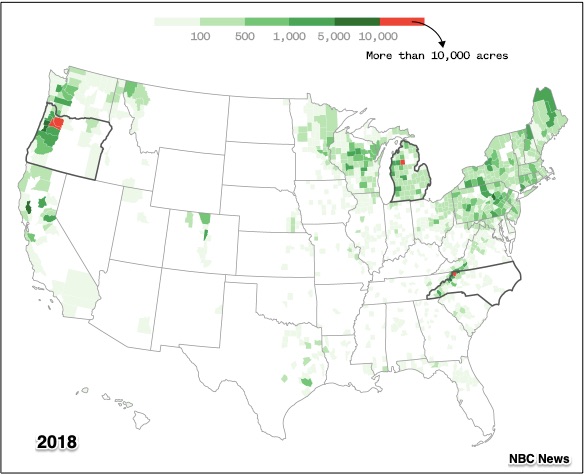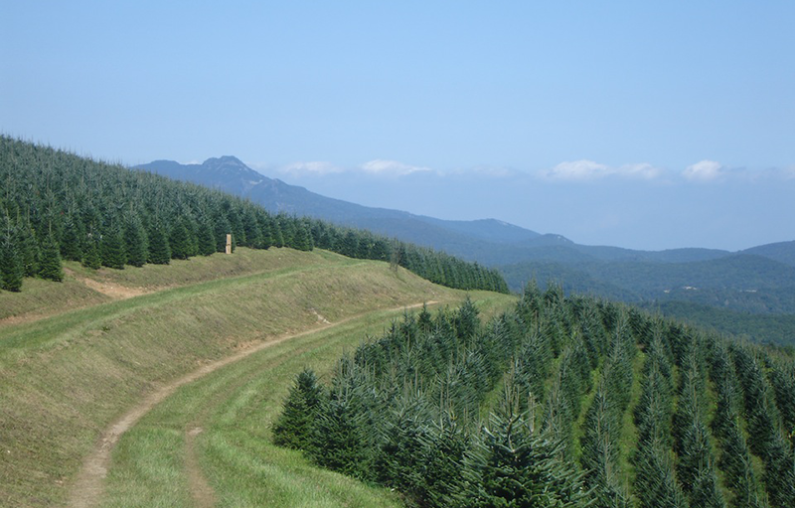Last year we asked what a Christmas tree says about the economy. This year, the same question has a new answer.
Christmas Tree Economics
Live Trees
Last summer’s 117 degree temperatures in Oregon hit Christmas tree seedlings the hardest. Fifty days without measurable rain also meant that less resilient species were scorched while most of the mature Nordmann and Douglas firs fared better. Knowing the seedlings won’t be harvested for seven or so years, farmers will pay to replant. For some, irrigation became another extra expense.
Marked in red, Oregon’s growers harvested 31 percent of U.S. Christmas trees in 2020:

Growers also have had to absorb higher labor, fertilizer, and transport costs. Hourly wages are up from $13 to $16. While smaller farms deplete their inventory close to home, not so for the big ones. The Noble Mountain Tree Farm, with 500,000 trees to sell, needs a nationwide network. Similarly, a large grower in North Carolina and Oregon said he sells to Costco and Home Deport. So yes, combined with higher production costs, the truck driver shortage and supply chain inconsistencies will probably nudge prices up by 5 to 10 percent.
Artificial Trees
Meanwhile, for artificial Christmas trees, the story is a bit different. Because most artificial trees are made in China, a container ship could have been the first delay. Then, at a West Coast port, the ship might have waited for weeks to dock. And even then, a truck or railcar might not have been available for unloading and delivery. As a result, like many other goods, Christmas tree transport is pricier and delayed.
Problems with artificial trees have made the live kind more attractive. If a local live tree is available for $75 and the artificial alternatives are up by 10 to 30 percent to several hundred dollars, some of the 80 percent of all households that buy artificial Christmas trees will switch.
Our Bottom Line: Inflation
The economic message from Christmas trees is higher prices.
While the markets for live and artificial Christmas trees intersect, they are also separate. Within each group, prices went up. Importers had an elevated shipping expense. One reported a whopping spike from $2,000 to $3,000 per container to $20,000. Growers faced higher production costs. And then, in stores and farm stands, wages rose.
Shown in green, the Consumer Price Index has popped 8.4 percent for commodities less food and energy during the 12 months that preceded October 2021:

The economic message from a Christmas tree is similar to the CPI.
My sources and more: This Washington Post article reminded me it was time to return to Christmas trees. Then, Pennlive had more detail as did the National (live) and American (artificial) Christmas Tree Associations. However, these sources from Oregon and from CNBC had the best details.






